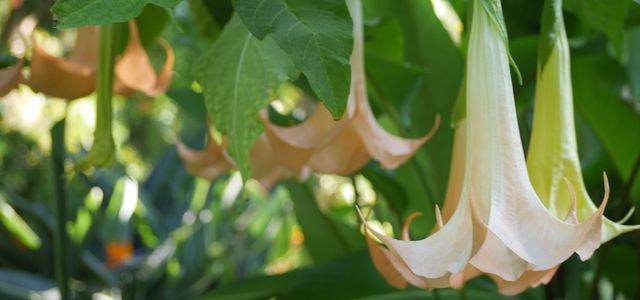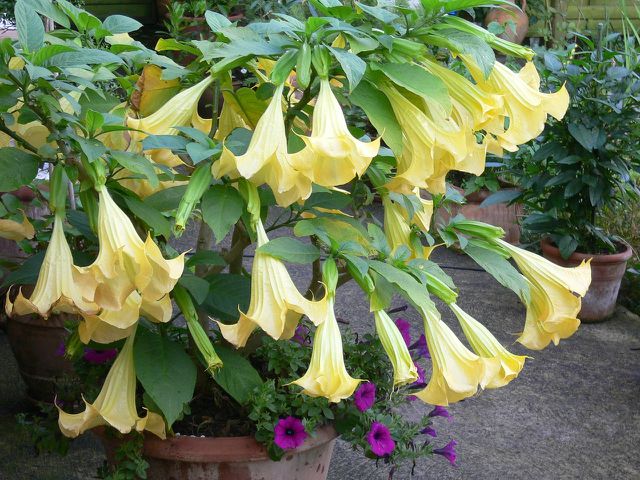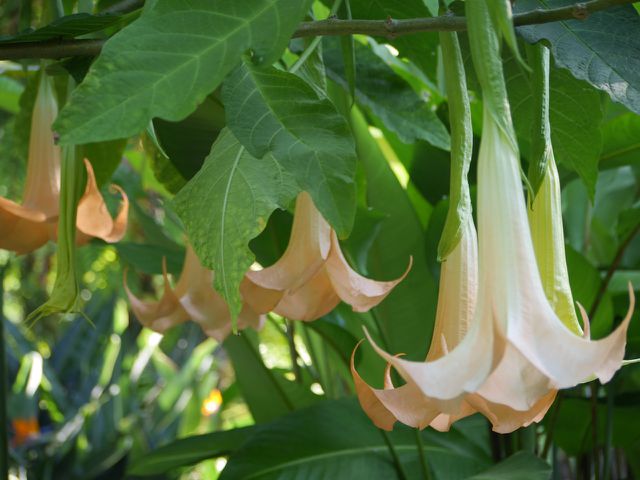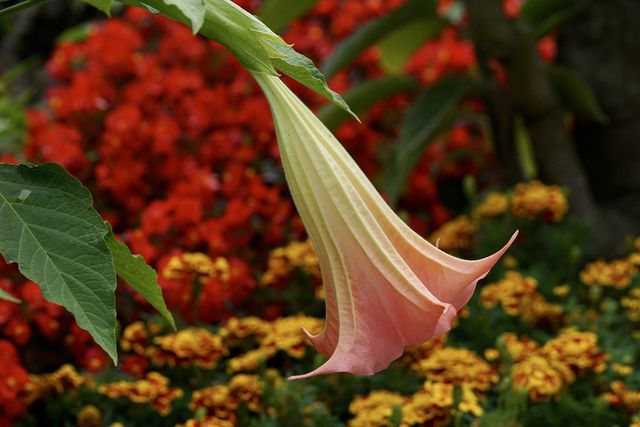
The angel’s trumpet has a funnel-shaped flower, from which it also gets its name. Here you will learn how to grow and care for them in the garden.
Angel’s trumpet belongs to the nightshade family and has white, yellow or pink flowers. These can grow up to 30 inches long and open in the summer months. Originally, the angel’s trumpet comes from the Andes in South America. Today, however, you’ll find it in many gardens and parks, as its large, shapely flowers make it a real eye-catcher. Growing and caring for the plant is not difficult.
Note: All components of the plant are highly toxic to humans and pets. Therefore, you should wear gloves when planting.
Contents
- 1 Planting angel trumpet: location, timing, soil
- 2 Care for angel’s trumpet: frequent watering and fertilizing
- 3 Caution: cut angel trumpet
- 4 Cut back the angel’s trumpet in the fall – a few days before wintering.
- 5 Overwintering angel’s trumpet: how to do it successfully
- 6 Propagate angel’s trumpet
- 7 Author
Planting angel trumpet: location, timing, soil

Angel trumpets are popular container plants. Nevertheless, if possible, you should put them directly into the ground. This way the plant can spread better and gets more nutrients. Over the winter, however, you will have to put them back in a frost-free place.
- Location: sunny and protected from wind
- Time: plant out from April (frost-free)
- Soil: humus-rich, nutrient-rich, loose
As soon as there is no more frost in spring, you can plant out the Angel’s Trumpet. Potted plant soil is ideal for the plant. It contains ten percent expanded clay, which stores water and continuously releases it to the plant. Of course, you can also mix your own soil with expanded clay. If you use a flower pot, you should place a layer of expanded clay at the bottom.
Care for angel’s trumpet: frequent watering and fertilizing

- Watering: Angel trumpets lose a lot of water through evaporation. Therefore, it is important that you regularly water the plant abundantly. The soil should always be moist. On hot summer days, you often need to water the plant twice a day.
- Fertilize: From the beginning of March to the end of August, you need to fertilize the angel’s trumpet every week, because it needs a lot of nutrients. You can use a liquid fertilizer for potted plants.
- Tip: You can find recommended organic fertilizers here: The best organic fertilizer
Or make the fertilizer yourself:
Caution: cut angel trumpet

You should only prune the angel’s trumpet when it has grown too large. Any pruning will reduce the flowering next summer. There are a few things to keep in mind:
Cut back the angel’s trumpet in the fall – a few days before wintering.
The plant has symmetrical and asymmetrical leaves. Flowers will only form later on shoots with asymmetrical leaves. You can recognize these leaves by the fact that a part is missing from the lower end of one half of the leaf.
At least one asymmetrical leaf must remain on each shoot for new flowers to appear in the spring.
Overwintering angel’s trumpet: how to do it successfully
Angel’s trumpets are sensitive to frost. Therefore, you must bring them indoors in the fall, but then water them only rarely:
- The perfect conditions are provided by a greenhouse that lets in plenty of light and has temperatures of five to ten degrees.
- A conservatory is also suitable, where it is between ten and 15 degrees warm.
- Alternatively, you can overwinter the plant in the dark (max. five to ten degrees). It will then lose all its leaves, but new ones will sprout in the spring.
- If you have planted the plant in the bed over the summer, you can put it in a large flower pot over the winter. Dig it up carefully with a spade. Many roots will be lost in the process, but the plant will not mind.
Tip: When you put the plant back outside after winter, avoid direct sunlight at first. A semi-shaded place is better for the plant in the first days.
Propagate angel’s trumpet
The easiest way to propagate angel’s trumpet is by cuttings:
Cut a branch below the base of a leaf.
Remove the lower leaves and put the branch in potting soil.
After about three weeks, roots will form. Then you can plant out the plant in a flower pot.
Alternatively, you can harvest angel’s trumpet seeds in the fall and sow them in the spring. Even then, it takes about three weeks before you can plant the plants in flower pots.

